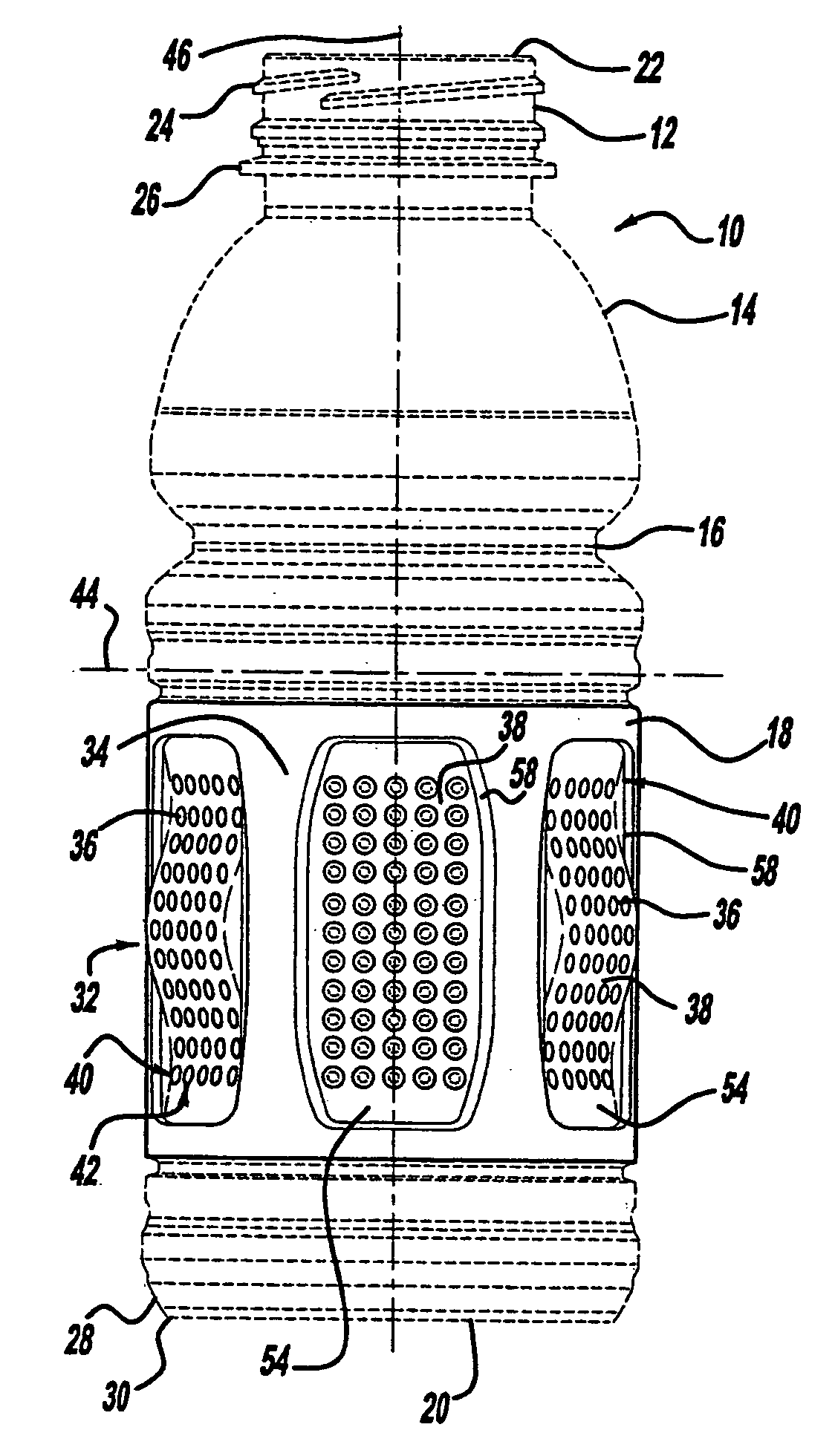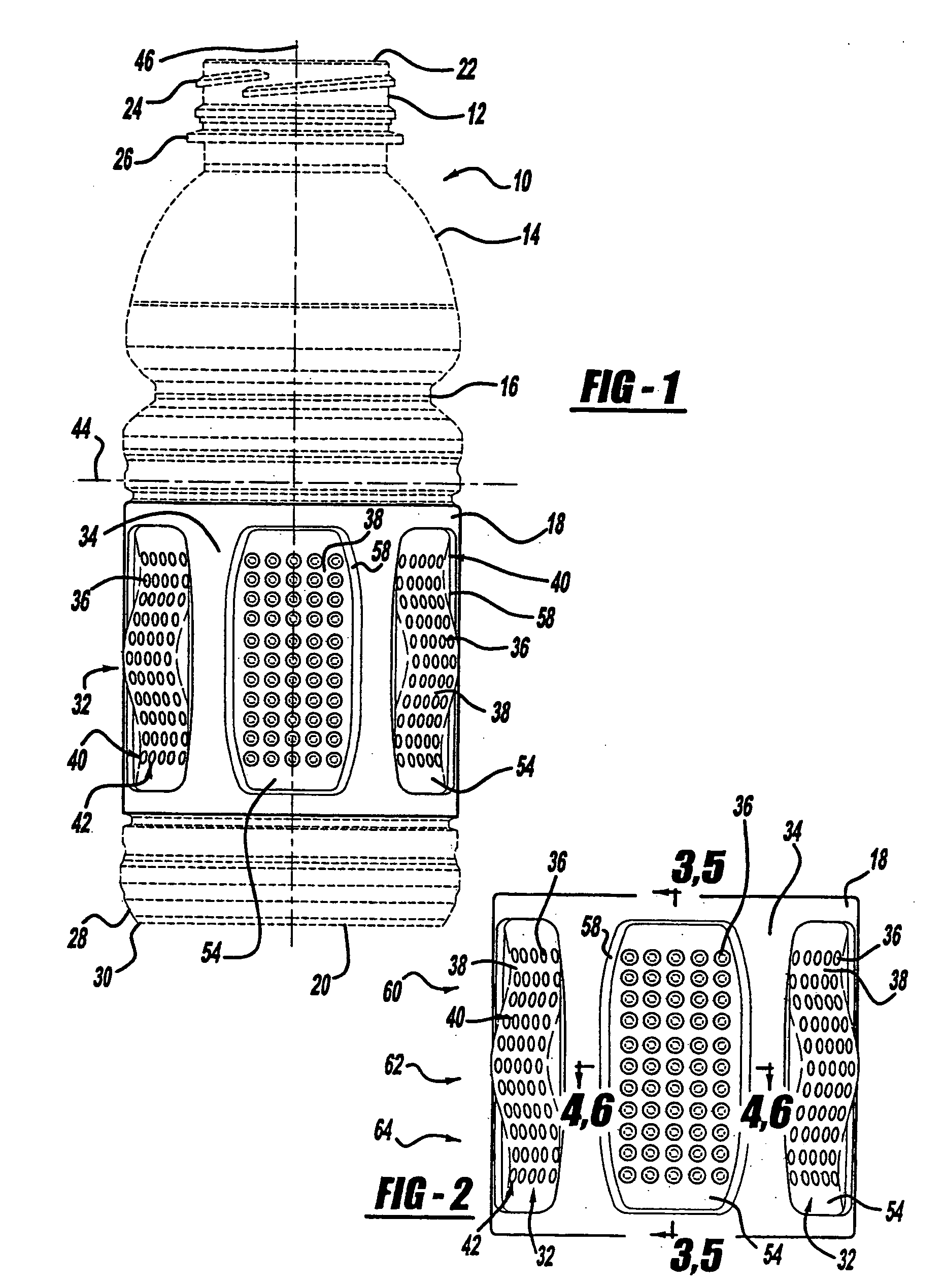Inverting vacuum panels for a plastic container
a vacuum panel and plastic container technology, applied in the field of side panels of plastic containers, can solve the problems of spherulitic morphology, the container cannot withstand temperature and time demands, and the non-high acid content commodities are not generally acceptable, so as to achieve the effect of decreasing the volume of the container
- Summary
- Abstract
- Description
- Claims
- Application Information
AI Technical Summary
Benefits of technology
Problems solved by technology
Method used
Image
Examples
Embodiment Construction
[0041] The following description of the preferred embodiments is merely exemplary in nature, and is in no way intended to limit the invention or its application or uses.
[0042] As discussed above, to accommodate vacuum forces during cooling of the contents within a heat-set container, containers generally have a series of vacuum panels around their sidewall. Traditionally, these vacuum panels have been semi-rigid and incapable of preventing unwanted distortion elsewhere in the container, particularly in lightweight containers.
[0043] Referring now to the drawings, there is depicted a sidewall portion of a plastic container embodying the concepts of the present invention. The drawings show the sidewall portion of the present invention, generally identified by reference numeral 18, adapted to cooperate with a specific plastic container 10. However, the teachings of the present invention are more broadly applicable to sidewall portions for a large range of plastic containers.
[0044] Be...
PUM
 Login to View More
Login to View More Abstract
Description
Claims
Application Information
 Login to View More
Login to View More - R&D
- Intellectual Property
- Life Sciences
- Materials
- Tech Scout
- Unparalleled Data Quality
- Higher Quality Content
- 60% Fewer Hallucinations
Browse by: Latest US Patents, China's latest patents, Technical Efficacy Thesaurus, Application Domain, Technology Topic, Popular Technical Reports.
© 2025 PatSnap. All rights reserved.Legal|Privacy policy|Modern Slavery Act Transparency Statement|Sitemap|About US| Contact US: help@patsnap.com



